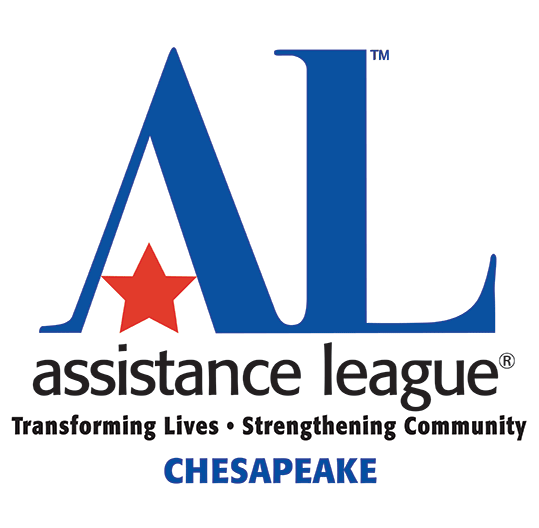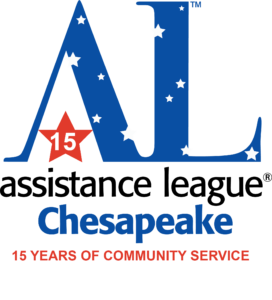 2021 marks our 15th anniversary as a chapter of Assistance League. For all of those 15 years, we have been filling the most basic needs of others, and in turn, filling their hearts as well as ours.
2021 marks our 15th anniversary as a chapter of Assistance League. For all of those 15 years, we have been filling the most basic needs of others, and in turn, filling their hearts as well as ours.
Our history has been one of growth, and with our dedicated volunteers working in our philanthropic programs, we have helped countless local children and adults. Our revenue has tripled over the past 15 years. But the amount of money spent in our community is only part of the picture. You can see below just how much each of our programs has grown and what they accomplish in normal and in Covid years.
KIDS IN NEED has grown to seven schools and by the end of this school year, we will have given out 21,000 uniforms to over 15,000 students since the program’s inception
Through PROJECT LITERACY, the number of books we have given to students has increased five-fold. We tutor students and provide classroom help at two of our partner schools.
The STORK’S NEST BABY SHOWER, which benefits the Stork’s Nest program at Baltimore Washington Medical Center, has grown to over $6,500 in annual donations, an increase of 800% since the program began.
KIDS ON THE BLOCK has grown to include two puppet troupes, which have given dozens of shows each year to local second graders.
SING-ALONGS FOR SENIORS are held 20 times a year and are attended in total by hundreds of senior citizens.
COMMUNITY OUTREACH in 2020 included providing Chromebook computers, headsets, books and clothing to students and families in our partner schools affected by Covid. Our members’ generosity was evident during the pandemic, when much of our usual work could not be done.
Assistance League of the Chesapeake has also participated in Anne Arundel County Homeless Resource Day and Make a Difference Day, and supplied books to the local Boys and Girls Clubs.
ALC Members Remember
This is an amazing year for Assistance League of the Chesapeake because it marks our 15th year as a chapter. Since 2006, plus our years as a guild, we have been filling the most basic needs of children and seniors in our community.
To celebrate, we will be sending out these newsletters featuring some of our members and their memories of volunteering with Assistance League. It is fitting that we begin with Dee Campbell, one of our founders and first president. Thanks to Valerie Rees for interviewing Dee and writing this first installment of “Members Remember.”
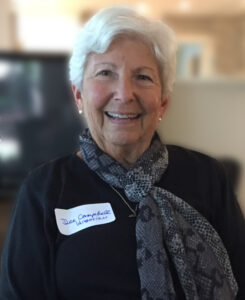 Dee Campbell, one of our founders, served as ALC’s president for its first two years, and through the years has served in every Board position, including an additional term as president in 2006.
Dee Campbell, one of our founders, served as ALC’s president for its first two years, and through the years has served in every Board position, including an additional term as president in 2006.
For many of us Dee is a long-time and cherished friend, but there are some who may not know her well. Originally from New York, she’s been married to Ric, her high school sweetheart, for over sixty years, and they now divide their time between Maryland and Florida. As the wife of a career military officer, the continual moves were both challenging and exciting. The challenge? The need to attend eight different colleges and universities to finally receive a BS in industrial psychology from George Mason University. She followed that with two graduate schools for her MSA. A few of the exciting parts? Oil painting classes in Japan, work with the Girls Scouts in the Far East, and time at a covert American facility.
When she’s not doing volunteer work, Dee loves to travel, read, play bridge, paint, take online courses on a variety of subjects and in the days before COVID, gather often with family and friends. This is a busy and engaged lady who gets things done.
In celebration of our chapter’s 15th anniversary, we interviewed Dee and asked her about the beginning and early days of ALC. We hope you enjoy your time with her!
You first joined Assistance League in California where you had recently moved. Tell us about how that first meeting went.
I joined Assistance League Capistrano Valley in 1993 when a friend and I went to a meeting together. I had actually just gone along for the ride to check it out with her. We both lived in Orange County—a not very friendly place, we’d discovered—and my friend’s sister, the president of a new Assistance League chapter in Minnesota, encouraged her to join in California and make some friends. In those days, you were required to have a sponsor in order to join. It turned out that the sponsor her sister recommended was already a good friend of both of ours, and that’s what prompted us to go to that first meeting. We were each presented with a rose and a request for the $50 membership fee and were installed as members that very day.
How many years were you a member of the Capistrano chapter before moving back east and which programs were you most involved with?
I was a member there for three years. There were nine of us in the orientation class. Our class name was Cathy’s Clowns, and over time we became very close friends. As members, we were required to choose two committees to join and to work two shifts a month at the thrift shop and one shift per month at Operation School Bell. I served as recording secretary after the next election. Orientation stretched over several weeks and we met once weekly during that time. We went on field trips to other chapters and to the original “mother house” in LA. (Today the headquarters is in Burbank.) The nine of us were required to host a party for the chapter at the end of orientation. I could write a book about this. I loved every minute of it! I was on the social committee but can’t remember what the other one was.
We read all the time about how different the east and west coasts are. So just for fun, can you tell us if that holds true for a west coast versus an east coast chapter?
The chapters on the west coast were very large and those in my Valley, Saddleback and Laguna Beach, were not interested in welcoming new members at the time (I know that’s not the case now). I was very lucky to be in such a friendly chapter. There were many social (with spouses) events. Once we rented a car on the Southern Pacific Railroad to go to the racetrack that Bing Crosby and friends built!
The story of how you came to start a chapter in Maryland is interesting, to say the least. Tell us how it came about.
There were no AL Chapters on the east coast. Cathy of Cathy’s Clowns was on the National Board and suggested that Jo Fontana, the chairman of the Guild Committee contact me (chapters in waiting were once called guilds). I had a health issue at the time and kept saying no to Jo. I thought that there were too many women’s groups already and that Anne Arundel County didn’t need another one! But since I usually relent and say yes, I agreed to host a meeting of my friends to see if there was interest. They must have thought so, because we formed a Board that day.
It was a pretty daunting task you were given. Were you nervous or intimidated?
Indeed a daunting task! We needed 40 people to start a guild. Sue Oster and I contacted everyone in Severna Park Newcomers Club. Several of the interested ladies put flyers and ads in their local neighborhood newsletters. The first meeting was at a church. Lo and behold, almost 40 signed up. I guess I was too dumb to be intimidated because I never thought we would have enough people to continue. Without people like Susan Baker we would never have been able to get going. Like me, Susan came to Maryland from a California chapter. Not only did she help start the organization, but she was the first Bylaws chair. Without her expertise, we would still be writing the bylaws! Bonnie Sysko, another charter member, wouldn’t join unless she had a real job. She started out as hours chair and look at all she has done since!
What did you absolutely love about being president? What did you like the least? And what about Assistance League makes it so exceptional in your opinion?
What I loved about being president was working with so many talented women. Another thing I loved was the enthusiasm and giving hearts of the members. And an enormous by product was the deep friendships I enjoy to this day with so many amazing Assistance League women.
What did I like least? I don’t like conflict, but conflict is inevitable, and so you deal with it. Also, it was hard to get much done with so little money at the beginning.
Of course, without resource development, once called fundraising, we wouldn’t have survived, and raising money is one of the most challenging parts of the job. Our first fundraiser was a yard sale in a local Severna Park church, with leftovers sold in Nancy Avent’s driveway. Books and Brunch, a fashion show, and many theme-based galas followed. A hurricane wiped out one of our venues right before the event. Fortunately we were able to use the Officers’ Club at the Naval Academy at the last minute, but the problem was that it was after 9/11, and no one could drive onto the yard without a military ID card. So those of us with access drove those without to the event. Fundraisers are so much work, and we decided that our time was better spent volunteering. Thus began our search for new ways to generate income. Kim Taft began a successful grant writing committee that has garnered countless grants, and Cynthia Mathwick, among others, successfully won our first big grants from Maryland Live. We also began seeking sponsorships and outside donations. And our terrific current VP for Resource Development, Cindy Culp, has brought us back full circle to yard sales, but hers have proven to be incredibly more lucrative with hundreds of fine and perfectly organized items for sale.
What about Assistance League makes it so exceptional? I think it would have to be the great good it can do to change people’s lives. Bonnie Sysko came up with our Emergency Kits program, collaborating with Partners in Care to deliver three days of food, portable radios, batteries, etc., to shut-ins. One of our first deliveries was to a widow who had had recent surgery. She told us that the ALC box of food saved her life. Maureen Smith brought everyone to tears when she shared the great needs of the children at Georgetown East Elementary School, and thus began our work in Title I schools. Paula Sparks added Meade Heights. Over the last years and under the direction of Marie Bossie, Operation School Bell and our Kids in Need program have expanded exponentially and touched the lives of countless children. The Kids On The Block program was begun by Darla Burchell, and those puppets have entertained and delighted students from one end of our county to the other. Touching lives––not just of those we help but ourselves as well. That is Assistance League to me.
What would you consider your greatest accomplishment as president?
I believe my greatest accomplishment was getting ALC off the ground, but it is not mine alone. I could not have done it without the help of the charter members! I am most proud of what can be accomplished when a dedicated group of women work together toward a common goal.
Can we get a little personal? Your husband Ric, retired now, was career military, and so you’ve lived all over and moved often. What were some things no one ever told you about being a military wife?
Yes, Ric was in the US Air Force for 24 years. But nobody told me that I would have to join the Officers’ Wives club! Would you believe that I was not a fan of women’s organizations! I avoided them like the plague! (I could write a second book about my exploits!) After Ric retired from the Air Force, I joined the Severna Park Newcomers Club to be in the book club, play Bridge, and participate in other activities. I’ve loved it. Made lifelong friends and have been in the book club since 1983! I’ve been on the Board forever and have enjoyed serving all these years.
In what ways do you think all the moving and living in different countries and states has impacted your thinking and your life goals?
I loved the moving part! Over 24 times in the Air Force and civilian life thereafter! Luckily my kids are outgoing and didn’t mind moving either. We always made it a positive thing. Wherever we went we usually knew someone from another base. They acted as sponsors and helped us assimilate into the new environment. Living all around the United States and a three-year tour in Japan has been a treasured learning experience. When Ric was deployed to Southeast Asia, I moved to Hallandale, Florida, for the year with my six-year-old and one-year-old daughters. I learned during that year of single parenting that I was much more capable than I thought. I made friends, cared for my girls and more than survived the year. That experience greatly impacted my thinking, making me realize that I was able to do things that I never thought possible.
You and Ric have two daughters. What do you think they would say about the military life?
I’m going to let my daughters answer this question in their own words:
Cyndi (oldest) “It was pretty difficult going to a new school each year – or even more than one school a year – but that forced me to be a more outgoing person. I probably wouldn’t have had any friends if I hadn’t make the effort. I’m proud of Dad for doing what he did for his country. And plus, Andrea and I didn’t have any choice in the matter. Haha.”
Andrea (youngest): “Obviously it was different for me, since I had the opportunity to be in the same place from 5th grade through high school. I was still pretty young when Dad retired. I agree that moving did force us to learn how to make friends, which I think helped when I went to college. I’m proud of what Dad accomplished in the Air Force and beyond.”
You place a high value on education and you’ve been a lifelong learner, from college to graduate school and onward, and you continue to take courses at the community college when you’re home in Annapolis, art classes when you’re in Florida, and you belong to four book clubs. How do you have time to do all these things, and do you ever sleep?
I went to college for one semester before Ric and I married. Since I was getting married, my parents decided that I needed to learn a usable skill and go to work to help support us. So off to secretarial school I went and hated every minute of it. After a stint with a Madison Avenue ad agency I decided I needed more education and went back to college. It’s true that I’ve continued to study in one form or another all my life. For me, the one positive thing about the pandemic has been that classes from AACC are on Zoom, and I am able to avail myself of many different kinds of courses, from how movies are made to a course on Roman Emperors.
12. What is:
Your favorite book(s)
Your favorite movie
A book everyone should read
Your binge TV show
One thing still on your bucket list
Favorite books: Most any of Pat Conroy’s, especially Prince of Tides; Also a big fan of Nelson DeMille, especially Charm School. A New favorite is This Tender Land.
Favorite movie: The Way the Were with Barbra Streisand and Robert Redford.
A book everyone should read: This Tender Land.
Binge shows: Mystery/Detective shows, Jeopardy and Home and Gardens.
On my bucket list: Iceland and the Mississippi River cruise that got cancelled last April for our 60th anniversary.
Your service and philanthropic work has taught you lessons. a) Can you share a few of these? And b) Given the driver of charity, what do you believe is the most pressing issue in today’s world that should be addressed by Assistance League?
I think patience and the ability to listen to all sides of an issue were two of the most valuable takeaways for me. Also, the knowledge that not everyone is going to like all of your ideas, and that’s okay, because compromise is key to working with others. I was blessed to have a wonderful friend in Kakey Smith, whose guidance and friendship sustained me through some of the rough seas.
I don’t believe there’s any more pressing issue for Assistance League than continuing to support and encourage the children in our target schools. It is a priceless investment in the future generation of our country. This year has been especially difficult for them, and I believe we are on the right course as we concentrate on Operation School Bell and KIN. These are important programs that will help them successfully make the transition from quarantine to what we all hope will be the world as we once knew it.
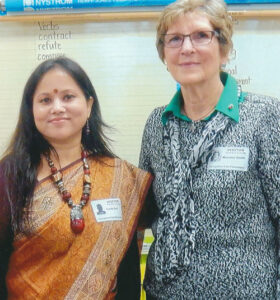 Our latest “Members Remember” newsletter highlights one of our best member recruiters, Maureen Smith. In addition to being responsible for many members joining our chapter, Maureen enthusiastically supports Project Literacy and started the Pen Pal activity.
Our latest “Members Remember” newsletter highlights one of our best member recruiters, Maureen Smith. In addition to being responsible for many members joining our chapter, Maureen enthusiastically supports Project Literacy and started the Pen Pal activity.
“When I was a young girl, I had many pen pals,” she explains, adding, “there was nothing like receiving an actual letter in your mailbox.” Thus, she wanted children at Georgetown East Elementary School to have this fun experience. Not only would the students make new friends, but they would also use their imaginations, improve their writing skills and increase their understanding of children outside their own community. Writing to a pen pal also promotes patience as the students anticipate receiving letters in return.
Over the years, Maureen has arranged pen pal exchanges with children in West Virginia, Texas, California and even Nepal. Nepal came about because a principal of a school there visited Maureen’s hiking group in Annapolis. The principal, Sunita Suri, was excited to have her students be pen pals, and they engaged a retired Annapolis school principal who makes regular trips to Nepal to deliver the letters. Before returning to her country, Ms. Suri visited Georgetown East Elementary, and, wearing her native dress, gave a presentation to the class. “I still have the little paper prayer flags that the children made, and they are hanging in my library at home,” says Maureen.
We provide our students with a folder, writing paper, pens, stickers and a sheet of Annapolis facts. We ask the children to include one fact in each letter; because of that, the pen pals started including facts about their home towns in their return letters. In writing the letters, some of our students could write pages and others had to be coaxed by our member-volunteers to write more than a sentence or two.
Students were encouraged to share stories about siblings, pets, friends, etc., and to always ask questions of their pen pal. Many of the pen pals were from rural areas and our students found it interesting to learn how different their own lives were from other children’s.
Thanks to Maureen, the wonderful Pen Pal activity continues and will certainly flourish once in-person learning returns in the fall.
The Birth of the Stork’s Nest Baby Shower
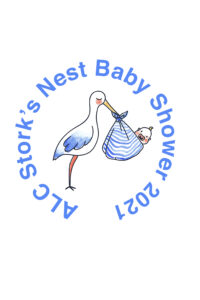 Over 14 years ago, our board members were researching ways our chapter could support a local hospital. Grier Smokovich, our Philanthropic chair at the time, met with the women at Baltimore Washington Medical Center who ran their Stork’s Nest program to see if it was what we were looking for.
Over 14 years ago, our board members were researching ways our chapter could support a local hospital. Grier Smokovich, our Philanthropic chair at the time, met with the women at Baltimore Washington Medical Center who ran their Stork’s Nest program to see if it was what we were looking for.
What is the Stork’s Nest?
Stork’s Nest at BWMC offers classes to expectant mothers about the importance of prenatal care, what to expect during labor and delivery, breastfeeding, basic infant care and safe sleeping.
Participants earn points by attending Stork’s Nest classes, going to their prenatal care appointments and adopting healthy behaviors. These points are used to shop at the Stork’s Nest store, where women can “purchase” a variety of infant care items including clothing, diapers and car seats.
Any pregnant woman in our county is eligible to participate, but the program’s emphasis is on engaging pregnant women who do not receive regular prenatal care and have a higher risk for having a low-birth-weight baby or premature birth.
How a Holiday Gift Exchange Became a Baby Shower
Once we agreed to support the Stork’s Nest, we realized we could incorporate it into our regular December meeting. At that meeting we traditionally had a gift exchange, and so we simply asked members to instead donate baby items that could be passed on to the Stork’s Nest.
The first chair of the shower was the late Joan Hechler. Thanks to our members’ generosity, the Hechler’s dining room overflowed with donations!
Ever since that first Baby Shower, our members have donated tens of thousands of dollars’ worth of essential baby items to the Stork’s Nest. In 2017 BMWC acknowledged our long-term support with an engraved plaque on their giving wall.
As we celebrate 15 years as a chapter (plus our six years as a guild) of National Assistance League, we are proud of our contributions to the health of new babies and mothers in our community.
This year’s Stork’s Nest Baby Shower and luncheon will be held on Thursday, October 14, 2021, at 10:00 a.m. at Quiet Waters Park, Red Maple Pavilion.
The cost is $20 plus a baby item to donate to the Stork’s Nest redemption store. You can purchase your ticket online here, or pay by check by downloading the registration form here. Download the Stork’s Nest Wish List here.
Our Origins
- +We have received many awards
- We have received many awards, beginning in 2002 when Cathy Vitali, an Anne Arundel County counceilwoman and now a judge, presented our guild with a county citation. The list of awards is too extensive to recount here but can be found on our website here. The greatest reward is knowing that we met the needs of children and their families with our time, our talent and our treasure, not to mention the wonderful friends and memories we made along the way.
- +Our fund raisers have been creative and fun
- We have been very creative with a variety of fund raisers over the years from grants, to galas, to KIN cards, to gift wrapping at Border’s Books, as well as “Books and Brunch,” direct mail projects, “dining and shopping for dollars” and yard sales. Today, a significant portion of our income comes from the generosity of you, through our current members’ giving programs.
- +We began as a guild in 2000.
- Our chapter began as a guild in 2000 and became the 114th chapter of the national organization in 2006. We now have 73 dedicated members.
- +We were the first chapter of Assistance League on the east coast of the United States.
- Assistance League of the Chesapeake was the first chapter of National Assistance League to be formed on the east coast of the United States. Assistance League is a national nonprofit organization with over 120 chapters and over 22,000 volunteer members dedicated to providing accessibility and fulfillment of community needs at the local level. It was established in California by Anne Banning and Ada Edwards in 1919 to aid families in need after WWI.
“To say that Assistance League of the Chesapeake has been a help to the children of our county would be an incredible understatement. Since 2006, members have donated innumerable supplies and expertise and hours of their time. Whether it’s uniforms, guest reading, helping with vision screening, tutoring, library help or through the puppet shows, where there’s a need, Assistance League has stepped in happily to help.”
Shelley Davenport, Office of School and Family Partnerships, Anne Arundel County Public Schools
